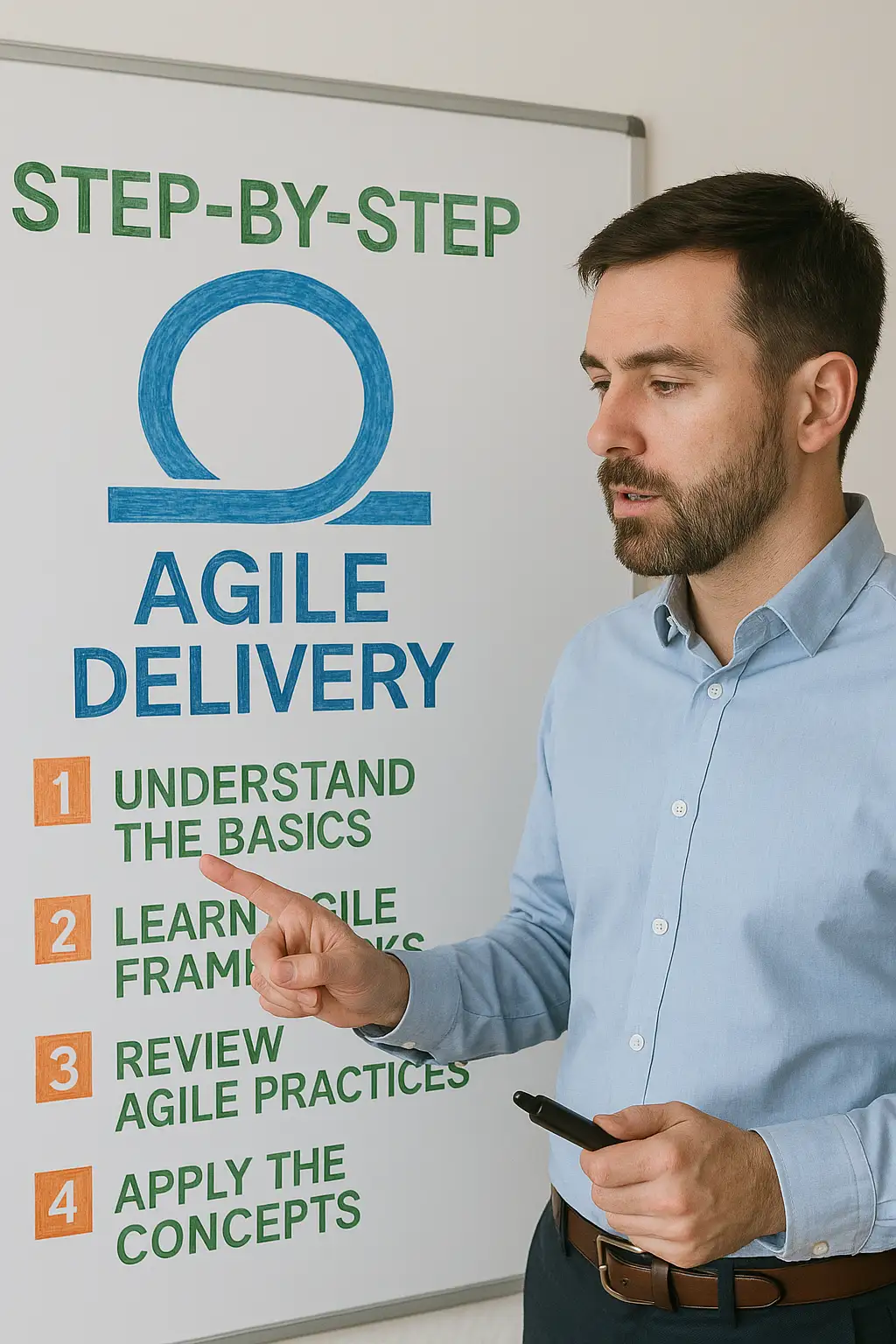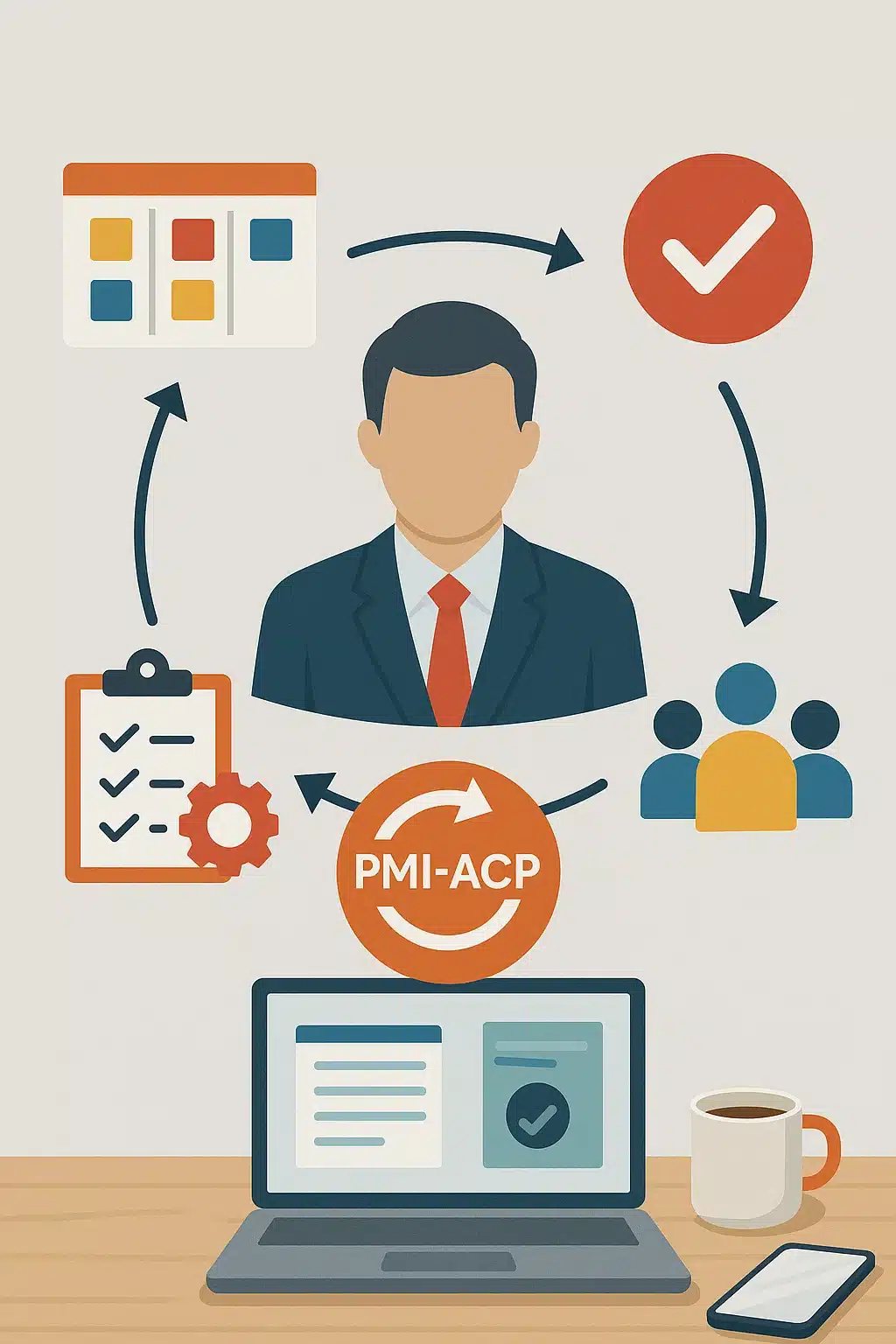Agile Series Episode 6: Agile Delivery for Project Managers
By: Hajime Estanislao, PMP®; Editor: Geram Lompon; Reviewed by: Alvin Villanueva, PMP®, PMI-ACP®
Feeling like Agile delivery is moving faster than your planning tools can keep up? Many project managers entering Agile environments struggle to balance structure with iteration while establishing delivery that is predictable and value-focused.
But Agile delivery is not about sacrificing control; it is about re-framing how you lead. It centers on guiding teams through short cycles of delivery, feedback loops, and value-driven decisions. Through Agile methods such as Scrum and Kanban, Agile delivery enables you to plan adaptively, prioritize continuously, and improve iteratively. These capabilities directly reflect what the PMI-ACP® certification evaluates.
Now, imagine yourself confidently leading Agile teams, monitoring real-time progress, engaging stakeholders without delay, and making informed planning decisions based on visual data and a shared understanding. By understanding Agile development, delivery, and estimation processes, you position yourself to pass the exam and lead in environments where delivery speed, quality, and alignment matter most.
In this episode, we will unpack how Agile delivery works, why it is a foundational skill for PMI-ACP candidates, and how project managers can support effective, value-based delivery in software development or agile project environments.
What is Agile Project Management and Delivery?
Agile delivery is the practice of producing valuable outcomes through short, collaborative iterations, delivering working increments frequently, and not just at the end of a project. It emphasizes early feedback, visibility, and team alignment, using Agile estimation to scope the right amount of work and respond quickly to change.
In PMI-ACP terms, Agile delivery touches several domains, including Value-Driven Delivery, Adaptive Planning, Team Performance, and Continuous Improvement. Candidates must demonstrate support in Agile teams, facilitate short delivery cycles, and build systems that can evolve with shifting priorities and stakeholder needs.
Compared to specific frameworks like Scrum, which prescribe detailed roles and ceremonies, Agile delivery is a broader concept. It is the how and when of delivering value, regardless of the method. Whether working in Scrum, Kanban, Disciplined Agile, or a hybrid model, the delivery principle remains – frequent delivery of usable increments, supported by estimation, feedback, and alignment.

Reasons You Need Agile Delivery for the PMI-ACP Certification
Agile delivery is not just a topic on the exam; it is how Agile works in practice. The PMI-ACP exam requires candidates to demonstrate how they apply Agile principles to lead team members, prioritize work, and deliver outcomes consistently.
Agile delivery helps project managers bridge the gap between theoretical knowledge and execution. When you understand how to guide teams through planning, the agile estimation process, and review cycles, you are better prepared for the exam and the environments you will face afterward.
Why It Matters:
- Reflects core PMI-ACP topics: Value-Driven Delivery, Team Performance, Adaptive Planning
- Helps you guide Agile teams in breaking down work and delivering incremental value
- Strengthens your ability to estimate work, assess risks, and manage team capacity
- Reinforces how to use visual tools such as burndown charts and cumulative flow diagrams
- Encourages collaboration with product owners, developers, and stakeholders
- Builds your ability to apply Agile estimation techniques in dynamic settings
- Supports Agile principles through frequent delivery, feedback-driven planning, and continuous improvement
Agile Estimation Fundamentals
Agile estimation is the engine behind Agile delivery. It enables teams to plan realistically, prioritize effectively, and manage risks with a shared sense of scope and effort.
Unlike top-down planning in traditional
Key estimation techniques include:
- Planning Poker (uses the Fibonacci sequence to encourage discussion and consensus)
- Three-Point Method (accounts for uncertainty using best/worst/most likely cases)
- T-Shirt Sizing (quick grouping of tasks by scale, XS to XL)
- Bucket System (sorts work into categories collaboratively and efficiently)
- Affinity Mapping (grouping similar tasks before applying relative sizing)
- Dot Voting (for prioritization, often paired with estimation)
Estimates are expressed in story points, T-shirt sizes, or other estimation units, intentionally abstract to prevent false precision. This approach encourages flexibility and adaptation as more information becomes available.
Estimation is revisited regularly during sprint planning, refinement, or mid-iteration. Agile teams build better estimates over time by tracking velocity, cycle time, and completed work, and adapting their estimates with every sprint.

Step-by-Step Guide to Remembering Agile Delivery for the PMI-ACP
To support learning and exam prep, here is a four-step memory model for Agile delivery, relevant to the PMI-ACP and adaptable for real project settings. Each step reflects core Agile concepts and ties to Agile estimation, prioritization, and continuous improvement.
Start with Value First
Delivery should always be anchored to customer value. Estimation and prioritization begin by identifying the why behind each story.
How to execute it:
- Use user stories tied to strategic or customer goals
- Apply affinity mapping to prioritize stories by complexity and value
- Clarify the problem before discussing the scope
Size It Smartly with Agile Estimation Techniques
Use relative estimation to plan effort and identify delivery scope, without unnecessary precision.
How to execute it:
- Choose techniques that match team maturity: planning poker, T-shirt sizes, bucket system
- Use historical data to calibrate estimates
- Blend top-down and bottom-up estimation when needed
- Encourage the whole team to contribute to estimates
- Apply story points, rough estimates, and final estimates for transparency
Sprint, Ship, and Show
Agile delivery happens in short cycles. The output should always be visible, testable, and meaningful.
How to execute it:
- Plan iterations with just enough scope
- Ship working software or tangible value by the end of each sprint
- Run sprint reviews to validate work with stakeholders
- Use dot voting to prioritize post-review enhancements
Reflect and Refine for Continuous Improvement
Every sprint is an opportunity to improve estimation, coordination, and delivery quality.
How to execute it:
- Host retrospectives to surface feedback
- Try random distribution of ideas to prioritize improvements
- Feed improvement items into the next sprint
- Track cycle time and team feedback for ongoing learning

Considerations For Successfully Integrating Agile Delivery and Agile Teams as a Foundation and Additional Knowledge
Agile delivery is a connector discipline; it brings together estimation, team performance, and value tracking under a single purpose: to deliver working outcomes frequently and reliably.
Different frameworks implement it differently: Scrum teams use time boxes, Kanban teams manage flow, and hybrid models use elements of both. But the purpose remains the same: deliver early, deliver often, and let feedback guide the next step.
Understanding how Agile estimation supports
Taking it to the Next Level: Practice Makes Progress.
Reading about Agile delivery is a start, but practicing it solidifies your knowledge. Apply what you have learned in small projects, internal team tasks, or pilot initiatives.
Use story points to estimate group tasks, hold quick backlog grooming sessions, and run lightweight retrospectives. These exercises build familiarity with delivery cycles, team coordination, and estimation dynamics.
Every real-world iteration you lead, no matter how small, reinforces the theory behind Agile delivery. It improves your recall during the PMI-ACP exam and sharpens your leadership in daily work. Practice builds more than just memory; it builds intuition.
ROSEMET is here to help.
Agile delivery brings Agile values to life: collaboration, responsiveness, and frequent value creation. As a project manager preparing for PMI-ACP, performing Agile delivery means learning to plan with purpose, estimate with flexibility, and guide your team toward continuous value.
You are not just preparing for an exam; you are learning to lead with agility.
Visit Rosemet to explore expert-crafted resources for CAPM, PMI-ACP, and Agile leadership, designed to help you grow with clarity, confidence, and practical insight.
References
Project Management Institute. (2021). A guide to the project management body of knowledge (PMBOK® Guide) (7th ed.).
Project Management Institute. (2020). Choose your way of working (WoW): Disciplined Agile® toolkit.
Project Management Institute. (2022). PMI-ACP® exam content outline. https://www.pmi.org/-/media/pmi/documents/public/pdf/certifications/pmi-acp-exam-content-outline.pdf
Project Management Institute. (2024). PMI-ACP® handbook. https://www.pmi.org/-/media/pmi/documents/public/pdf/certifications/pmi-acp-handbook.pdf

